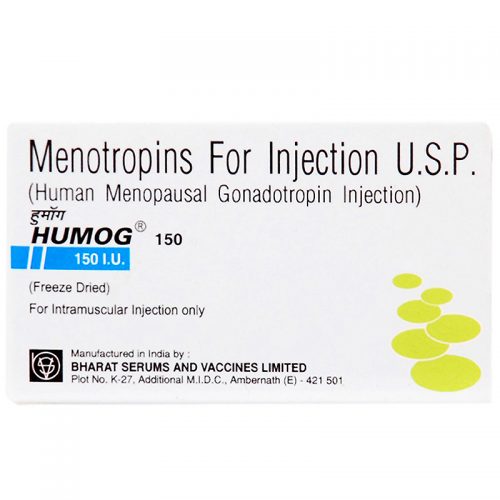Showing the single result
Human Menopausal Gonadotropin
Human Menopausal Gonadotropin (hMG) is a hormonal substance containing a follicle-stimulating hormone (FSH) and a lutenizing hormone (LH).
FSH stimulates the growth and recruitment of immature ovarian follicles in the ovary. In early (small) antral follicles, FSH is the major survival factor that rescues the small antral follicles (2–5 mm in diameter for humans) from apoptosis (programmed death of the somatic cells of the follicle and oocyte). In the luteal-follicle phase transition period the serum levels of progesterone and estrogen (primarily estradiol) decrease and no longer suppress the release of FSH, consequently FSH peaks at about day three (day one is the first day of menstrual flow). The cohort of small antral follicles is normally sufficiently in number to produce enough Inhibin B to lower FSH serum levels.
Follicle-stimulating hormone (FSH) is a gonadotropin, a glycoprotein polypeptide hormone. FSH is synthesized and secreted by the gonadotropic cells of the anterior pituitary gland, and regulates the development, growth, pubertal maturation, and reproductive processes of the body. FSH and luteinizing hormone (LH) work together in the reproductive system.
FSH is used commonly in infertility therapy, mainly for ovarian hyperstimulation as part of IVF. In some cases, it is used for reversal of anovulation as well.
In addition, there is evidence that gonadotrophin surge-attenuating factor produced by small follicles during the first half of the follicle phase also exerts a negative feedback on pulsatile luteinizing hormone (LH) secretion amplitude, thus allowing a more favorable environment for follicle growth and preventing premature luteinization.
